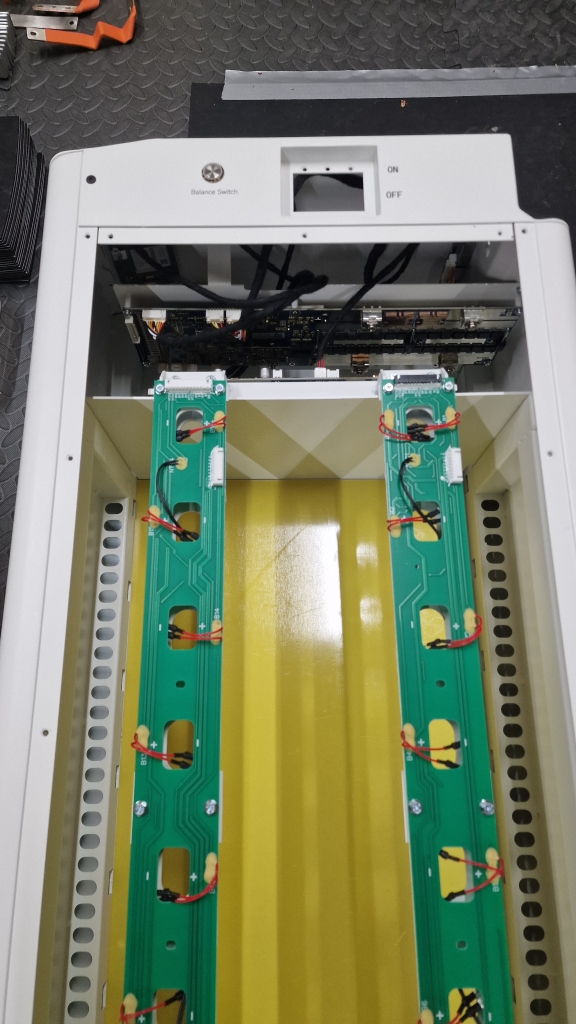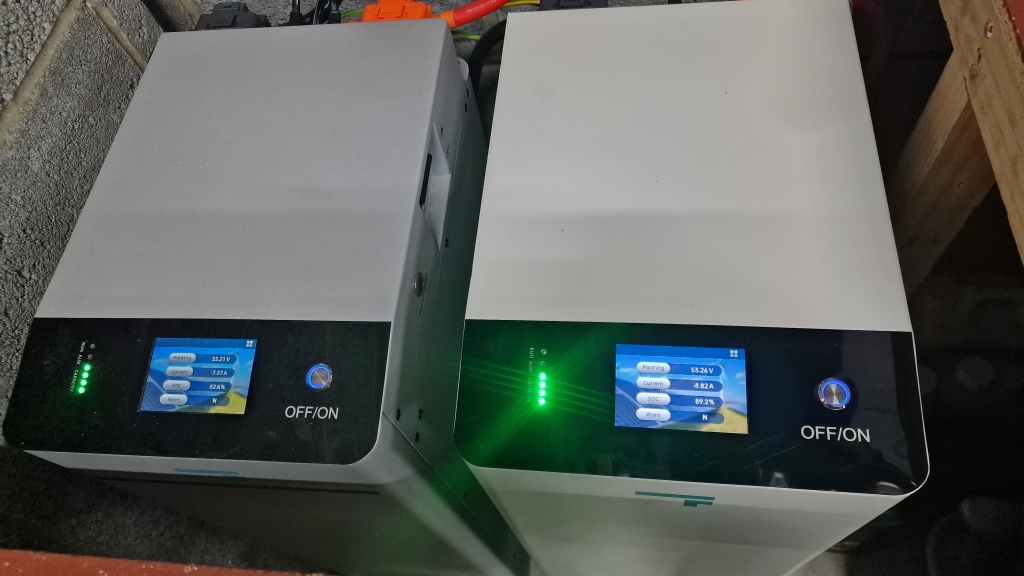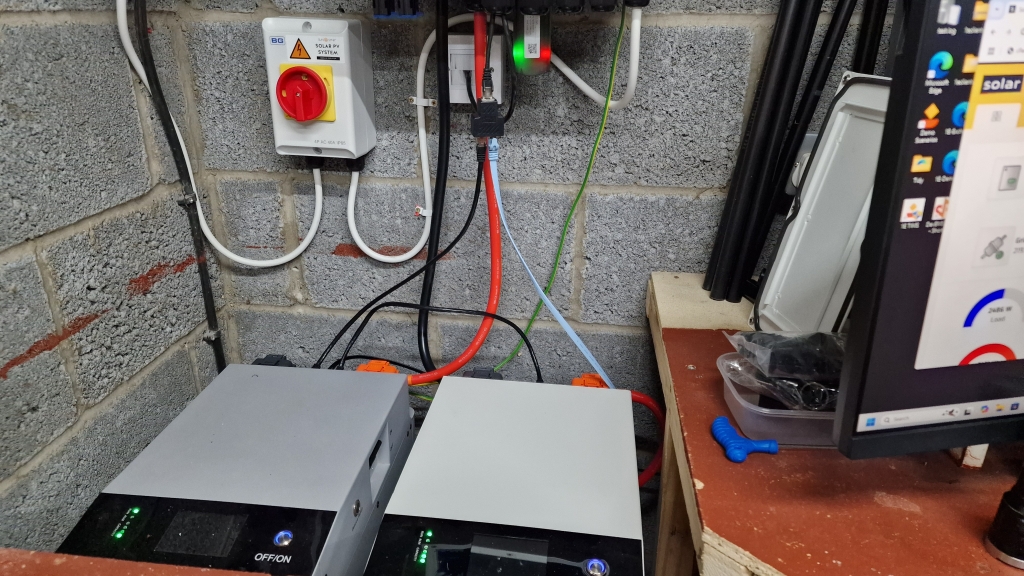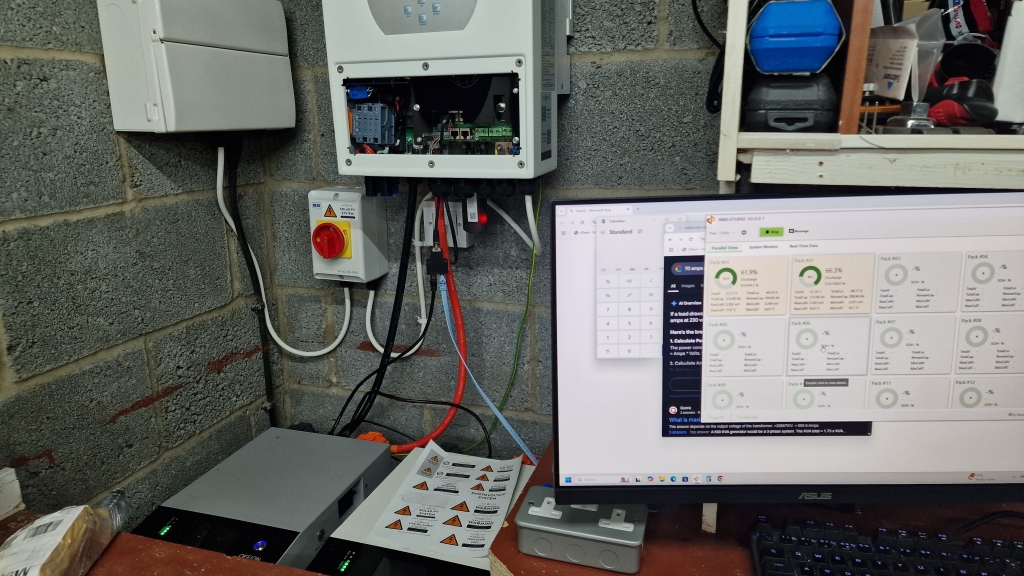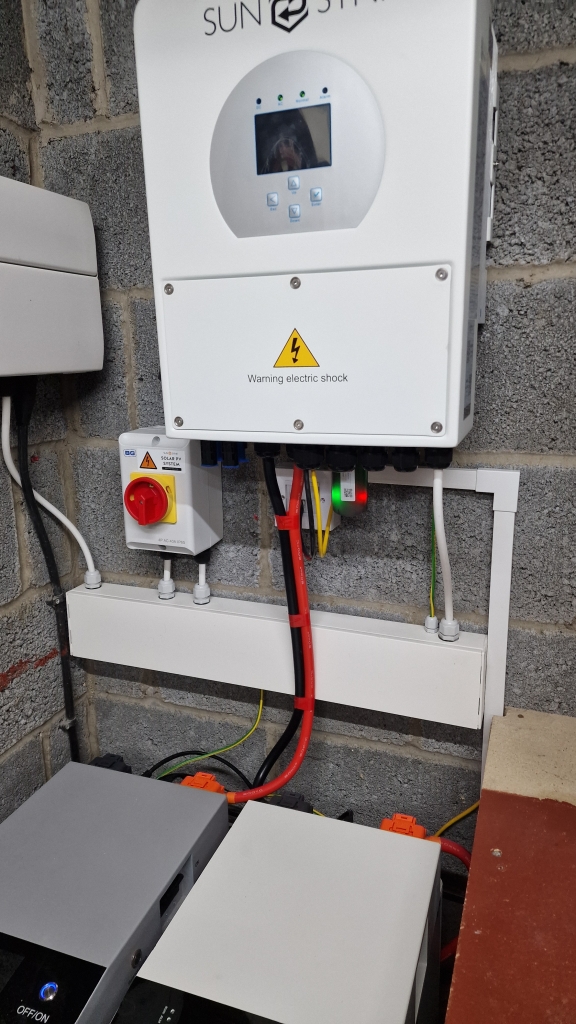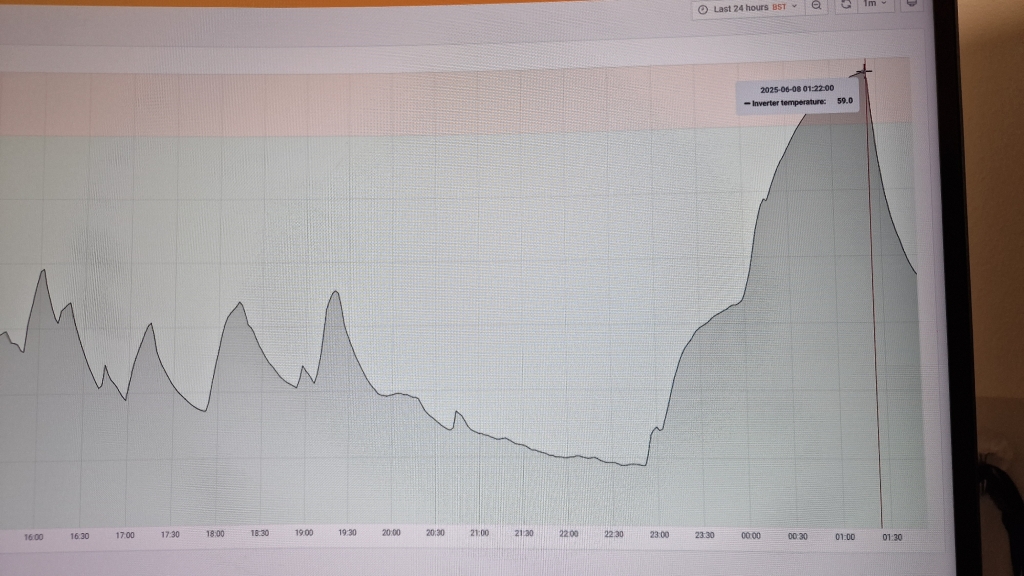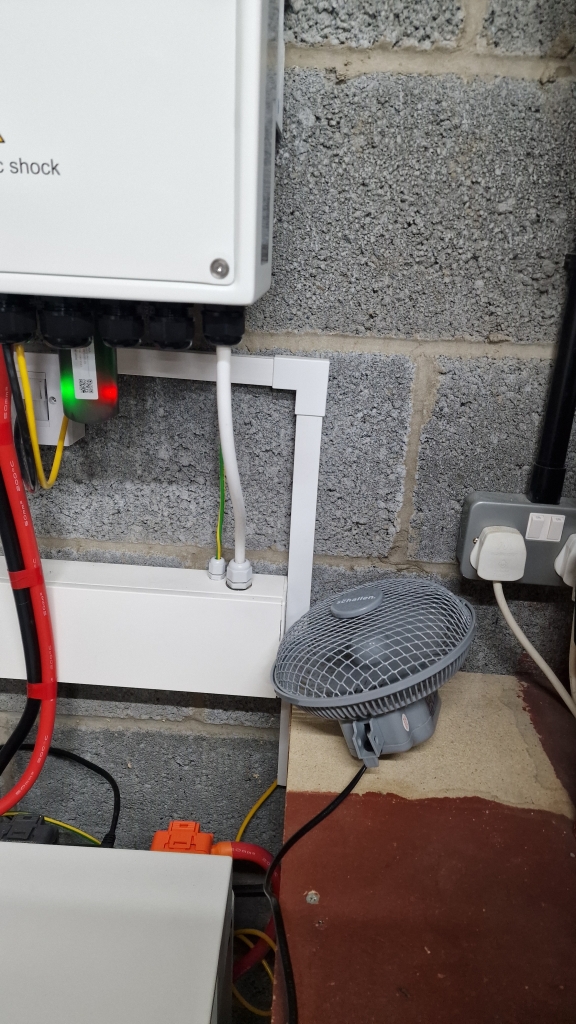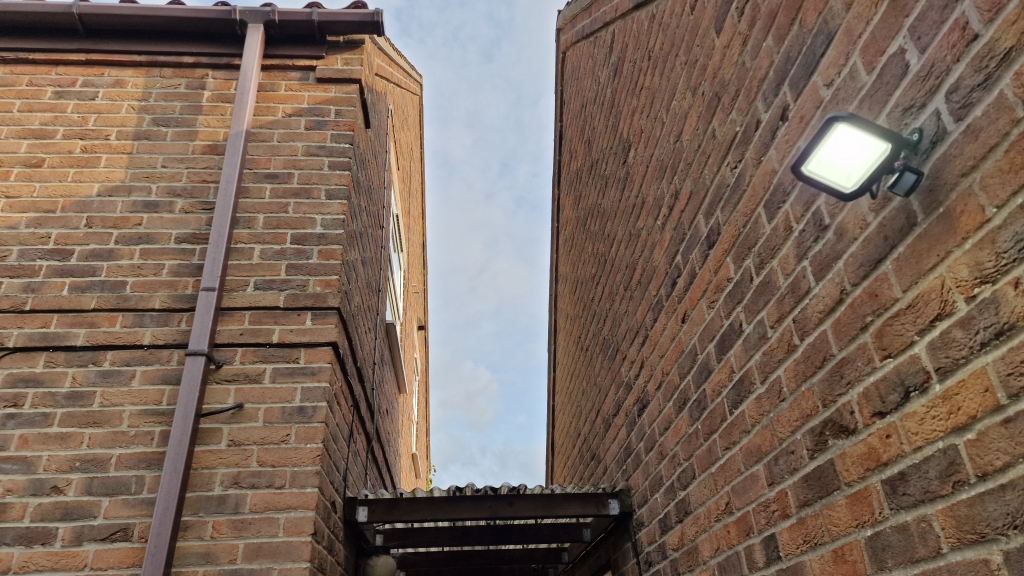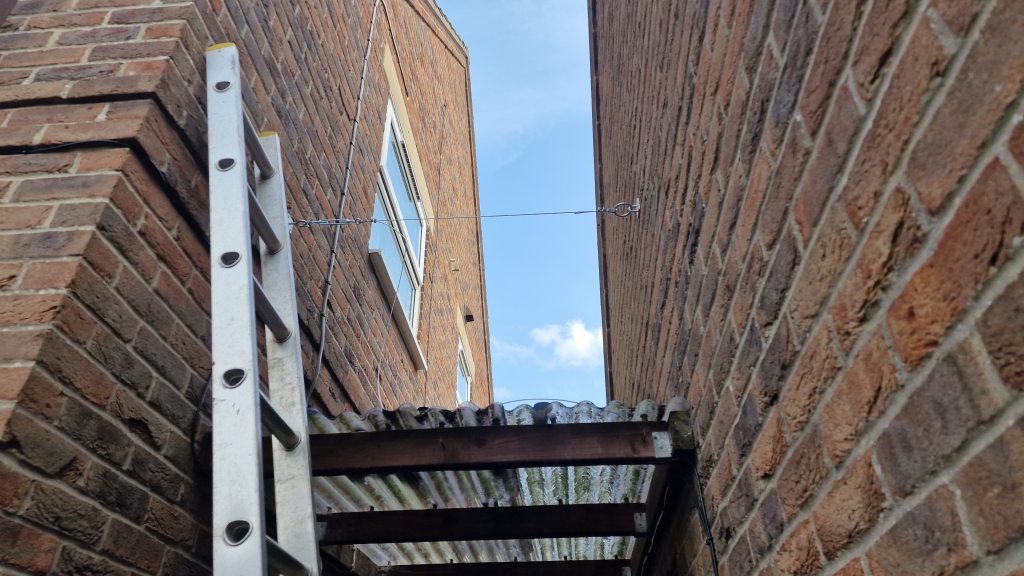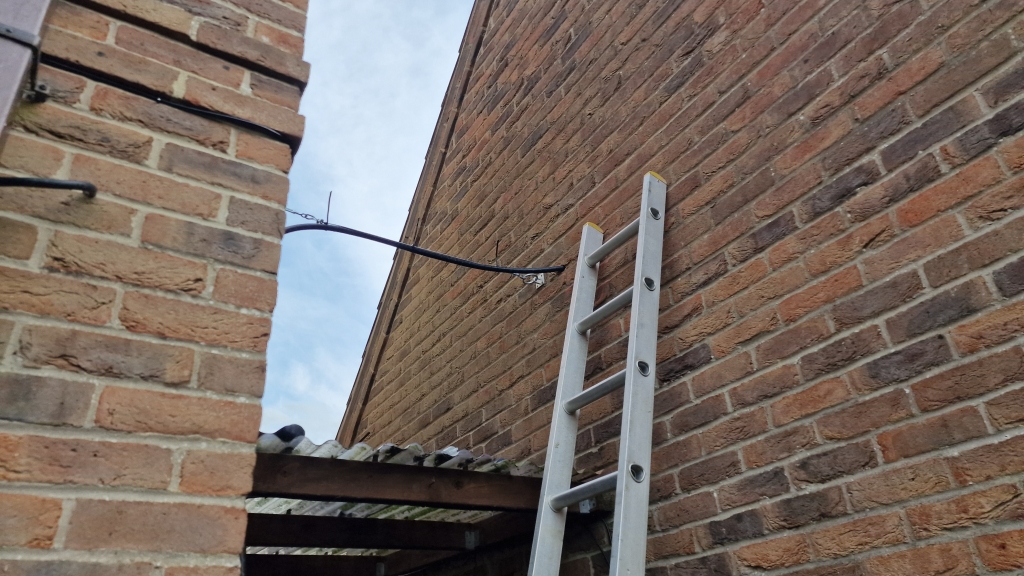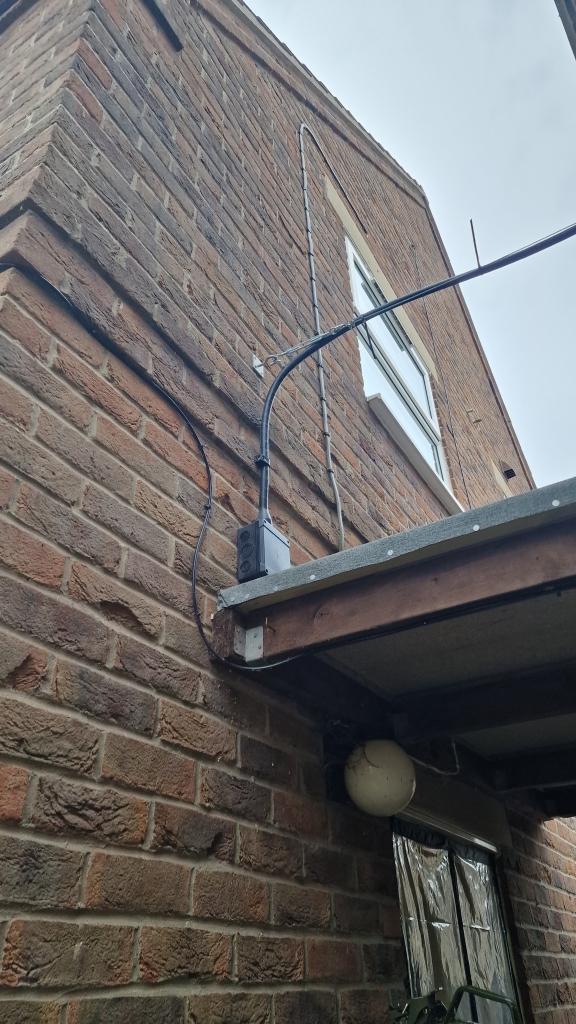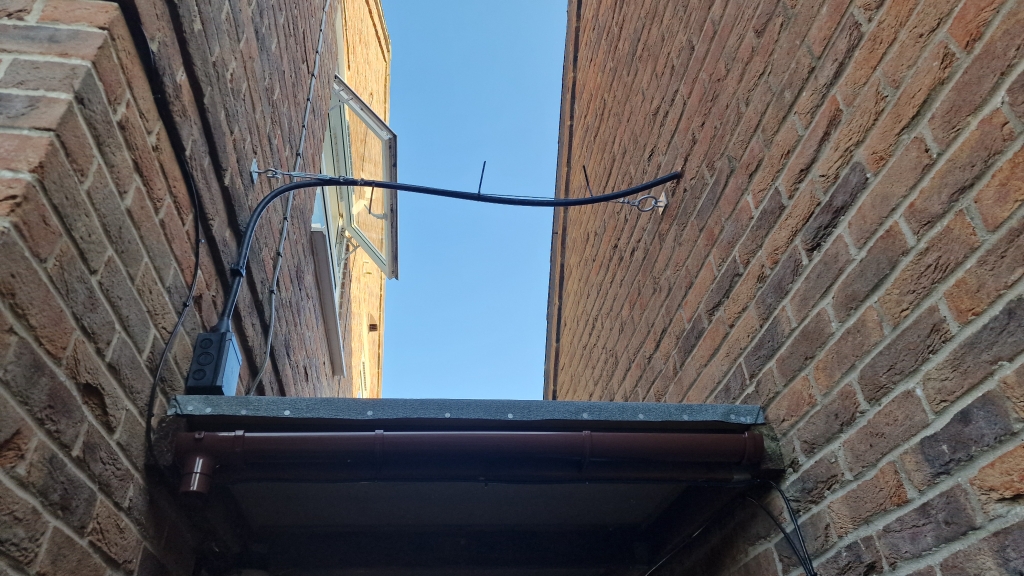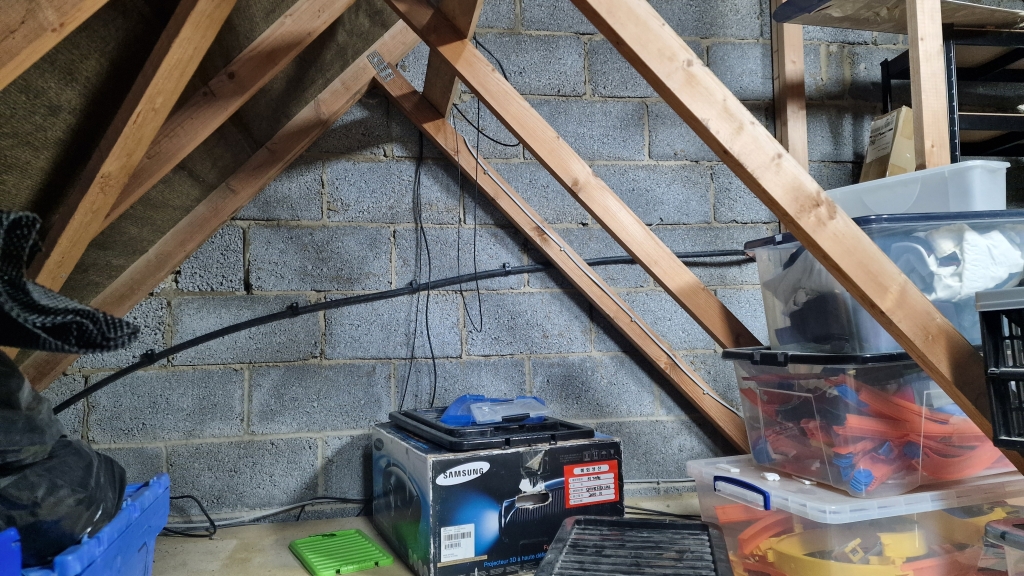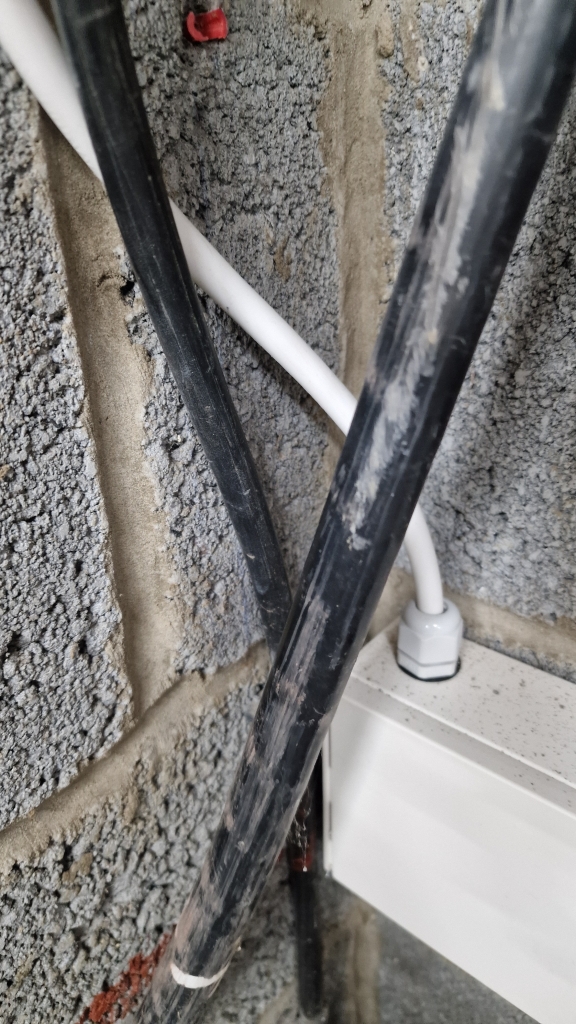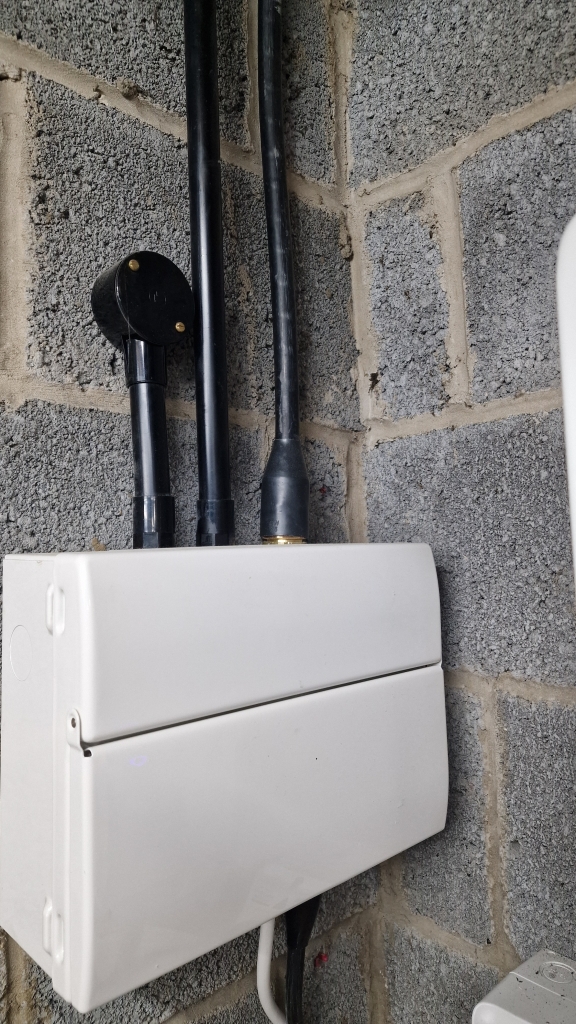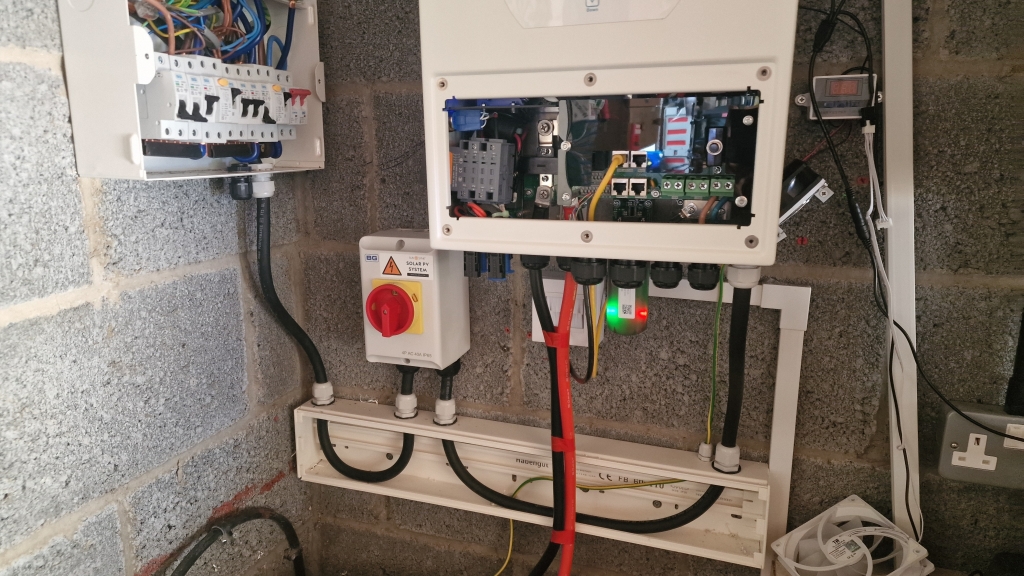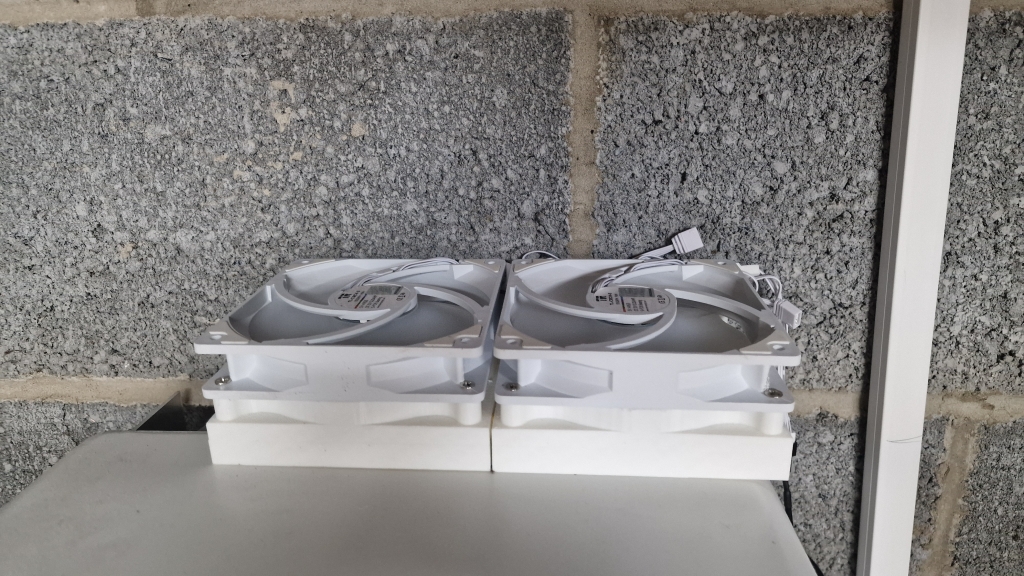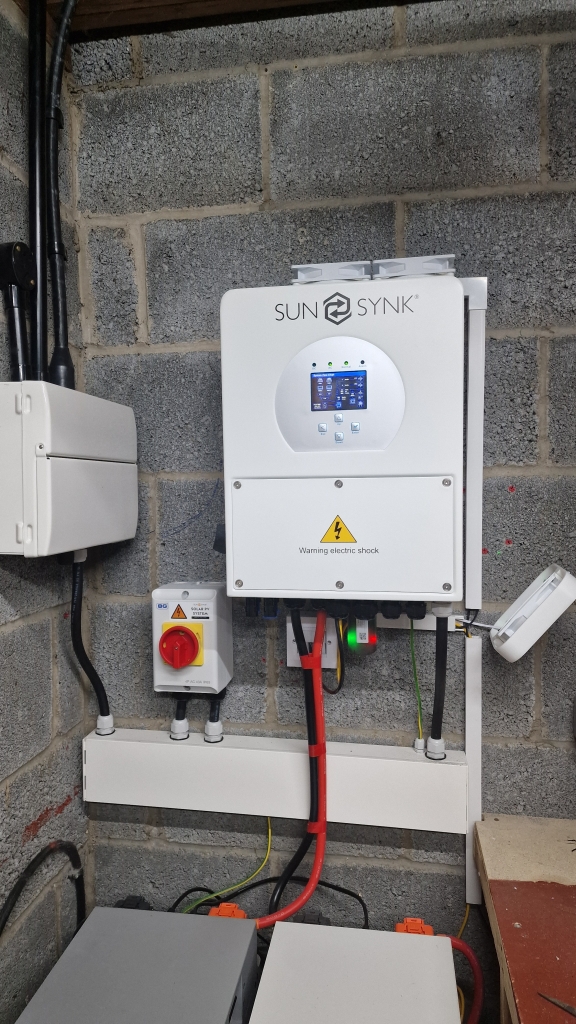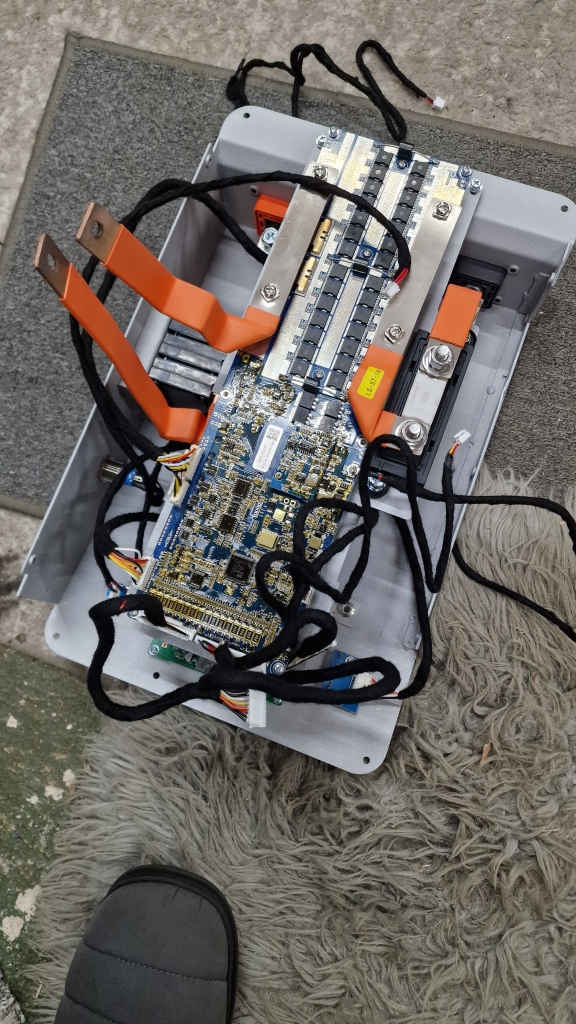A little update! It has been a little while since I posted anything here:
I had to do a little tidying up to clear up the area ready for the second battery, so this wood needed to come out:
Little bit cleaner, and I wanted to make up and improve the cabling, so you can see a new earth cable, for joining the two batteries in the foreground>
So, with the area cleared out, test fitting with the unmade kit:
Next was to build up the battery, i got the white to help me ensure I never mix them up

, same process as the last one, but this time I was a LOT faster!!
Built up, and connected:
Monitoring in place:
Now in, and working, we have been most days working entirely from the batteries, taking them down to 25% on the worst days with an extra car top-up after the school run. I did have to change how I ran the cable, splitting the Positive and Negative between them to help ensure more even current draw

Next up was the cabling - It was too messy, as installed by the sparky, and it was not working for me... I took photos of all the connections, and undid them all, step by step, and installed some trunking with glands, and made it look a little neater:
Then the monitoring cabling, and slightly re-jigged the battery cables:
I did find the inverter was running slightly hotter during certain parts of the day, especially with the hot weather we had been having, a single small fan did a great job of bringing the temp down:
Given this, I decided I would use some extra cooling, and will build that out later using some PC fans on a timer/smart switch, more on that later...
Then I wanted to update the old split board in the house, and move to RCBOs, with surge protection, and modernise things a bit. I then found out that the previous sparky had given me some duff advice, notably, that the white cable (provided by the sparky) used to connect the inverter to the garage consumer unit was under-sized, the board was installed a bit wonky, and was VERY messy inside. It had been rushed, and we also noticed some errors when getting the EICR checks done, which the new sparky has corrected for me.
Additionally, I also wanted to upgrade the cable to the garage, as currently it was a 2.5mm armoured cable, which went under-ground. So updating it was not going to be simple. So, i decided to go big, and whilst having the main house CU replaced get that cable updated to a larger 16mm armoured cable!
First things first, I procured, and ran the cable using a catenary wire between the buildings, here is the gap, and route I decided to take:
Due to the regulations, I had to run it above a set height when suspended, so I chucked in the catenary wire:
Cable routed, holes drilled... Whilst I was up there the corrugated roof was bothering me, so that had to be upgraded later:
So, I remade the roof with a wooden/felt structure, and here you can see the box where the cable enters behind the consumer unit:
I then added some guttering to tidy things up, and stop me getting dripped on when walking under! (I later joined this up to the downpipe on the house):
The other side of the cable, in the garage, clipped and secured on it's route to the CU:
new cable vs the old, it is considerably thicker, and can handle a LOT more current:
Then installed into the CU, its the one entering from the top right, bottom right is the old cable:
Next was to replace the white flex, to a much heavier duty flex, larger glands/etc, which was correctly sized, and I removed the old SWA (bottom left, bent out of shot) and blanked it out with a gland, but I have plans for this gland later!
You can see I was experimenting with a temperature controlled set of fans, which I later moved away from, in favour of this self-designed 3dprinted unit, with another lower mounted fan too:
I tried a number of different fan types, and sizes, but eventually settled on the the above, with flow/noise/cooling effects, and we end up like this:
Just ignore the missing T-piece in the mini-trunking, I added it later!
This is mostly as things stand now.
I am down to spending under £100 a month on juice, and this is mostly off-peak usage on cheap-rate at 7p per kwh. There are a couple of blips during the day when I use more than 5.5kw, and pull a few pence from the grid, but this is minor really.
Next up will be solar, and the 7kw charger!

 www.fogstar.co.uk
www.fogstar.co.uk




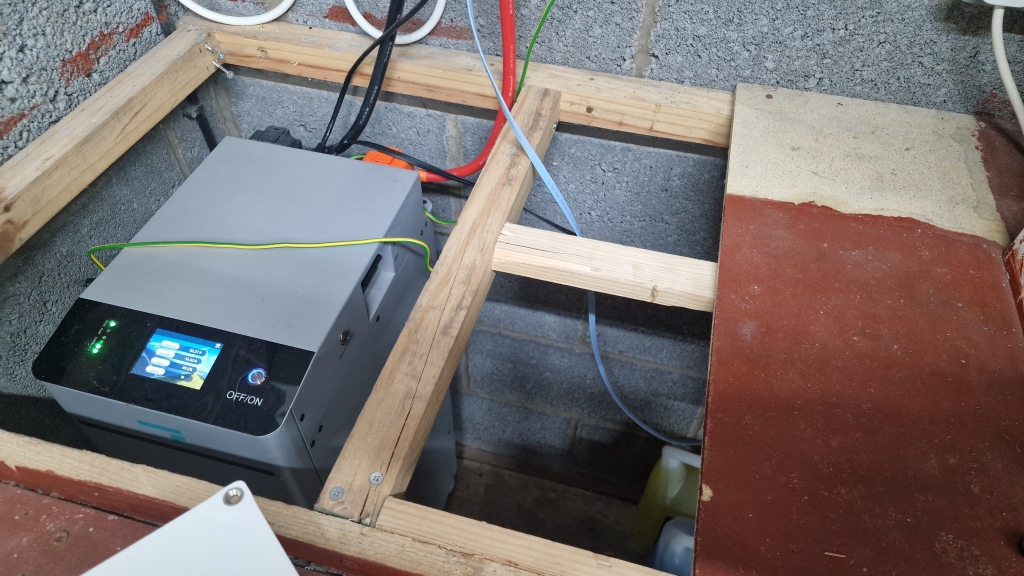
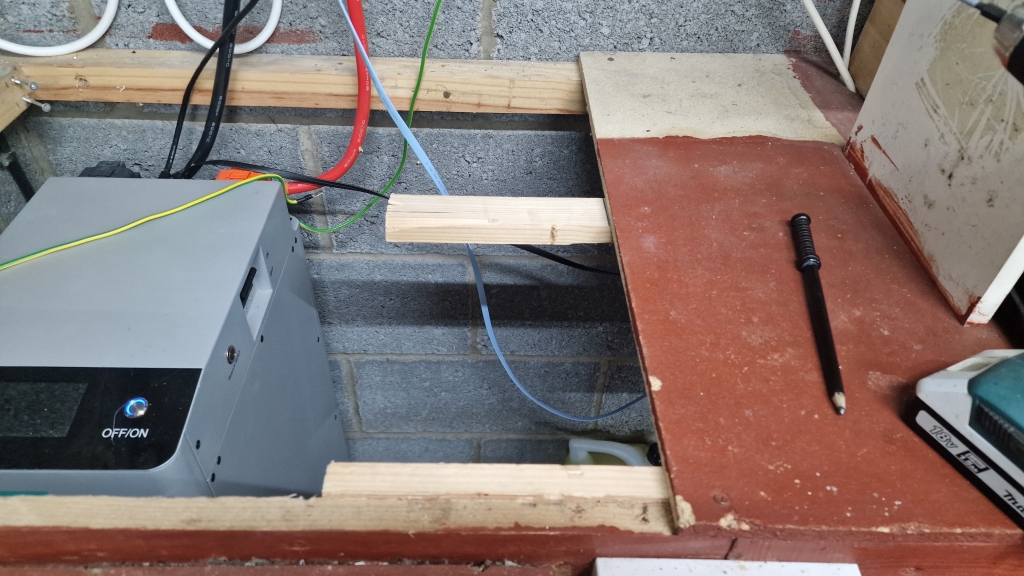
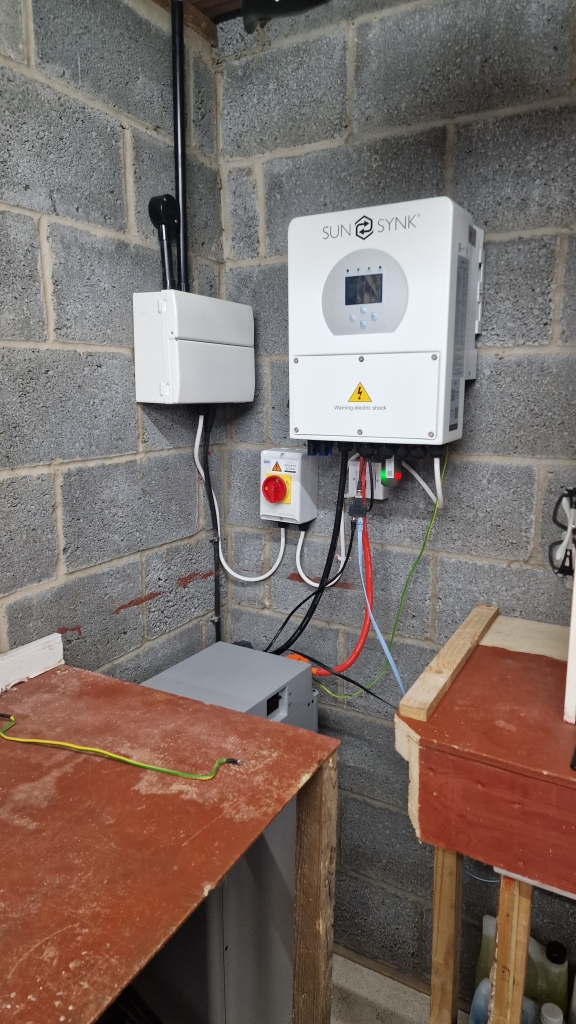
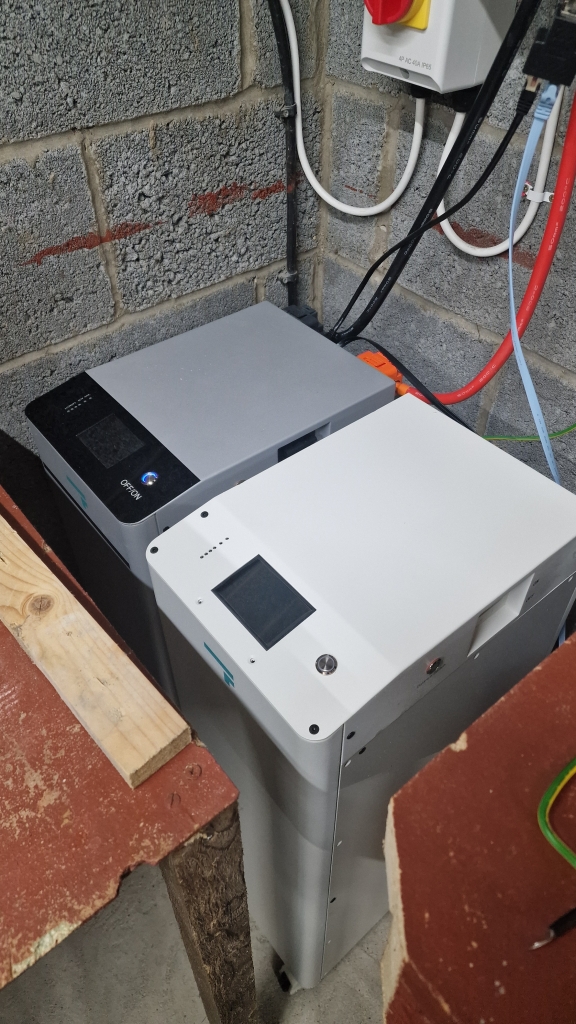
 , same process as the last one, but this time I was a LOT faster!!
, same process as the last one, but this time I was a LOT faster!!